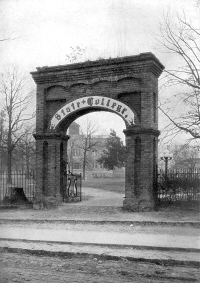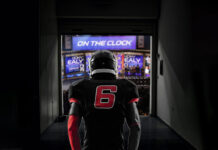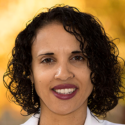by Alfred D. Moore III
 Formed in 1947 to extend segregated educational facilities, the Law School at South Carolina State College (known as “State College”), a Black college located in Orangeburg, South Carolina, produced a generation of attorneys whose efforts assisted in dismantling the racist system that spawned its creation. The institution was conceived in 1946 when John Wrighten, a World War II veteran and graduate of State College, applied to the University of South Carolina School of Law and was denied admission based on his race.
Formed in 1947 to extend segregated educational facilities, the Law School at South Carolina State College (known as “State College”), a Black college located in Orangeburg, South Carolina, produced a generation of attorneys whose efforts assisted in dismantling the racist system that spawned its creation. The institution was conceived in 1946 when John Wrighten, a World War II veteran and graduate of State College, applied to the University of South Carolina School of Law and was denied admission based on his race.
Represented by Thurgood Marshall and other members of the NAACP’s Legal Counsel which sought to integrate segregated educational institutions, he sued the university. Judge J. Waring Waites, the federal judge who presided over the case, gave the University of South Carolina and the state three options:
- to admit John Wrighten to the university.
- to discontinue operation of its law school.
- to establish a “separate, but equal” law school for the plaintiff and Blacks in the state.
The state and the university selected the third option.
In its attempt to maintain separate law facilities, the state appropriated $200,000 for a law school and $30,000 for a law library at State College. On September 17, 1947, the Law School opened at State College with nine students. It would endure for 19 years before closing in 1966 due to low enrollment, high costs, and the desegregation of the University of South Carolina School of Law. The Law School at State College was one of a series of segregated law programs that opened in the 1930s and 1940s in the wake of Gaines v. Canada, a case that in 1938 created a precedent where states opened black professional schools to prevent Blacks from attending ones that were all-White.
Between 1947 and 1966, 51 students graduated from the Law School. Despite the school’s hasty formation, over its nearly 20-year operation it possessed all of the components, albeit on a reduced scale, of a fully functional law program. Between the Law School’s opening in 1947 and closing in 1966, the number of volumes in its library grew from 7,500 to 21,537. Eleven African American faculty members taught within the institution at various times between 1947 and 1966. Two faculty members, including Dean Benner Turner, graduated from Harvard University, two from Howard University, and the others from established law programs at Suffolk University, Case Western Reserve University, Wayne State University, the University of Iowa, the University of Kansas, and Fordham University. The professorate included Cassandra Maxwell, the first black female admitted to the bar in South Carolina.
The Law School had a student organization called the “Thomas E. Miller Law Society,” named for Thomas E. Miller, a lawyer who became South Carolina State College’s first president when it initially opened under the name the “Colored Normal, Industrial, Agricultural and Mechanical College of South Carolina” in 1896. The Law School was an institutional member of the American Law Student Association (ALSA) that aimed to “cultivate and promote better scholarship” among students and it had a moot court.
Though the Law School was plagued by low enrollment throughout its 19-year existence, a factor that played a major role in its closing, the students nevertheless experienced greater interaction with their professors than their counterparts in larger, more established law programs. Hemphill Pride II, a former student at the Law School, captures the essence of what it was like to attend the program when he said in an interview:
“It had teachers down there who were educational surgeons. What do I mean by that? I mean if you were dumb and did not want to do, they could cut your head open and stuff that information in your head and then sew it back up. They let no one come by them that did not get it. If they had to go over it 10 times. If they had to look for you in the afternoon to see where you were supposed to be. They went all over campus to get you. They were determined you were going to come out with a good education.”
Between 1951, when South Carolina required a written examination for the bar, and 1968 when the last Law School at State College graduate took the bar exam, 29 out of the 50 African Americans admitted to the South Carolina Bar graduated from the Law School. The graduates practiced nationally and internationally in locations such as Washington, D.C., Nigeria, and the U.S. Virgin Islands.
However, it was through the accomplishments of the alumni of the Law School that the program had its most significant impact. One graduate, Ernest Finney, Jr., became the first African American Chief Justice of the South Carolina Supreme Court. Matthew J. Perry, Jr., served the state branch of the NAACP as the special counsel from 1957 to the early 1970s. He became the first African American from the Deep South to be appointed to a federal bench and was South Carolina’s first Black U.S. District Court judge.
The alumni were also at the forefront of civil rights litigation. At least 12 of the 27 graduates who practiced law in South Carolina were engaged in civil rights litigation, including “reported cases” which were federal and appellate cases that impacted case law. The Law School alumni represented clients involved in sit-ins, boycotts, and civil rights demonstrations. Several months before the organization of the Montgomery Bus Boycott, in the fall of 1955 a Law School graduate filed petitions in behalf of activists who boycotted businesses in Orangeburg and the surrounding areas for the failure of local school districts to comply with Brown vs. Board. A Law School graduate defended the “Friendship Nine” who in January 31, 1961 boycotted segregated lunch counters in Rock Hill, South Carolina. These nine, Black college students initiated the “Jail Not Bail Movement” across the South where activists elected to serve their full jail sentences to elicit national press coverage rather than pay bail after an arrest. In 1963 Law School alumni defended demonstrators in Edwards v. South Carolina, a case referenced in court battles throughout South Carolina and the South to reverse the convictions of activists involved in peaceful street demonstrations.
Additionally, the alumni provided legal counsel in cases such as Gantt v. Clemson Agricultural College of South Carolina (1963), Henrie Monteith’s lawsuit against the University of South Carolina (1963), and Brown v. School District No.20, Charleston, South Carolina (1963), which desegregated Clemson University, the University of South Carolina, and Charleston County grade schools respectively. These institutions were the first public schools in South Carolina to admit black students in the Jim Crow era.
In the 1950s and 1960s, Law School alumni were often the only options for persons who needed legal representation in South Carolina if arrested while participating in the civil rights movement. Often these lawyers were not paid for such services. According to graduate Ruben Gray, on many occasions when traveling throughout the state to represent clients, the graduates “would not get a damned thing … not even gas for your car.” The social engineers behind the organization of the Law School built it to restrict Black lawyers to serving Black people in Black communities. Much to their consternation, the Law School produced lawyers whose legal efforts opened doors for future generations of Black South Carolinians to learn, live, and work in various communities regardless of color.
Alfred D. Moore III is the registrar at Guilford College in Greensboro, North Carolina. He holds a doctoral degree in higher education administration from the University of South Carolina.












My great grandfather graduated from here–Paris Simkins
There is a book written by W. Lewis Burke, law professor at U of SC, in which I saw your great grandfather referenced in relation to the enrollment of blacks at USC during Reconstruction. In Burke’s work about Judge Matthew Perry, Charles Bailey (any relation?) is referenced in terms of trying to desegregate the USC School of Law in the 1930s.
At Freedom’s Door: African American Founding Fathers and Lawyers in Reconstruction South Carolina
Matthew J. Perry: The Man, His Times and His Legacy
Attorney Perry was an outstanding gentleman and legal scholar, I had the opportunity to introduce him at an event at state college. I am honor to see the recognition of one of the best HBCU’s in the country get there just do for producing citizens who have contributed to the legal mines. I wish more Law Schools produce more freedom fighters like the ones State College did. Congrats to South Carolina State University.